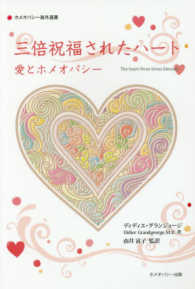Full Description
Mourning in America is a critical examination of what could be considered the midpoint (and perhaps high-point) in the prevalence of the horror anthology format on television: the 1980s. Anthology television series span through different genres, and present a different story and a different set of characters in each episode or season. Despite their 'lowbrow' pedigree as products of a maligned genre in an equally maligned medium, 80's anthology horror series drew equally upon the literary horror tale's studies of psychological obsession and the vicious morality tales of 'Pulp' subgenres to reveal an American landscape of excessive greed, alienation, and antipathy.
Focusing on key programs of the era such as Cliffhangers (1979), Darkroom (1981-82), Tales from the Darkside (1983-88), The Ray Bradbury Theatre (1985-92), Friday the 13th: The Series (1987-90), and the reboots of The Twilight Zone (1985-87) and Alfred Hitchcock Presents (1985-89), Kristopher Woofter and Erin Giannini highlight the persistent subversive themes and production realities of American televisual horror during a period of extreme American exceptionalism, conservatism, xenophobia, and isolationism that parallels the current American political landscape. In doing so, they assert that the undervalued and under-studied Pulp tradition on TV subverted America's sacrosanct vision of itself.
Contents
Foreword by Stacey Abbott and Lorna Jowett
Introduction: Horror Anthology TV
Part I— The Politics and Poetics of Pulp Horror TV
1. Pulp TV and the Horror Morality Tale
2. American Gothic TV as a School of Suspicion
3. Towards a Pulp TV Horror Humanism
Part II— Production Realities and the Horror Anthology Series
4. Anti-Arc TV—Anthology and Semi-Anthology Horror as Collection
5. Guided Tours of Horror—Primetime Pedigree vs. the Lurid Landscape of Syndication
6. The Erotics of Pulp Horror TV
Conclusion







